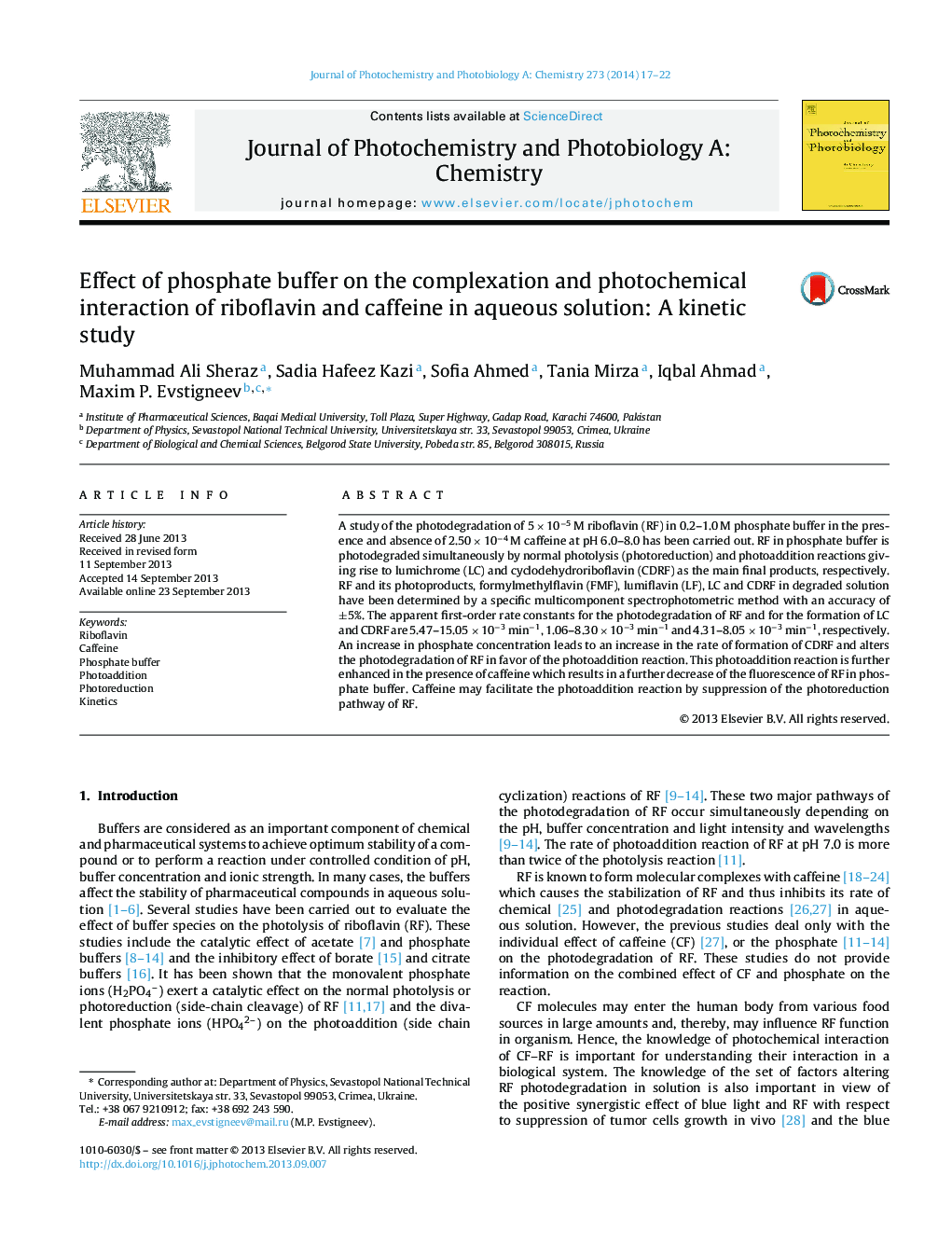| Article ID | Journal | Published Year | Pages | File Type |
|---|---|---|---|---|
| 26419 | Journal of Photochemistry and Photobiology A: Chemistry | 2014 | 6 Pages |
•The photodegradation of riboflavin (RF) in phosphate buffer involves simultaneous photoreduction and photoaddition reactions depending upon the experimental conditions.•The kinetic evidence has been presented to support the view that caffeine (CF) causes nearly two-fold enhancement in the photodegradation pathway leading to the photoaddition of RF.•CF–RF complexation creates a low dielectric environment within the complex to facilitate the photochemical transformation of RF to the products.
A study of the photodegradation of 5 × 10−5 M riboflavin (RF) in 0.2–1.0 M phosphate buffer in the presence and absence of 2.50 × 10−4 M caffeine at pH 6.0–8.0 has been carried out. RF in phosphate buffer is photodegraded simultaneously by normal photolysis (photoreduction) and photoaddition reactions giving rise to lumichrome (LC) and cyclodehydroriboflavin (CDRF) as the main final products, respectively. RF and its photoproducts, formylmethylflavin (FMF), lumiflavin (LF), LC and CDRF in degraded solution have been determined by a specific multicomponent spectrophotometric method with an accuracy of ±5%. The apparent first-order rate constants for the photodegradation of RF and for the formation of LC and CDRF are 5.47–15.05 × 10−3 min−1, 1.06–8.30 × 10−3 min−1 and 4.31–8.05 × 10−3 min−1, respectively. An increase in phosphate concentration leads to an increase in the rate of formation of CDRF and alters the photodegradation of RF in favor of the photoaddition reaction. This photoaddition reaction is further enhanced in the presence of caffeine which results in a further decrease of the fluorescence of RF in phosphate buffer. Caffeine may facilitate the photoaddition reaction by suppression of the photoreduction pathway of RF.
Graphical abstractRiboflavin (RF) photodegradation in phosphate buffer involves simultaneous photoreduction to form lumichrome (LC) and lumiflavin (LF) through formylmethylflavin (FMF) as an intermediate and photoaddition to give rise to cyclodehydroriboflavin (CDRF). The photoaddition reaction is mediated by [1RF–PO42– complex] and is enhanced in the presence of caffeine (CF) by CF–RF interaction.Figure optionsDownload full-size imageDownload as PowerPoint slide
